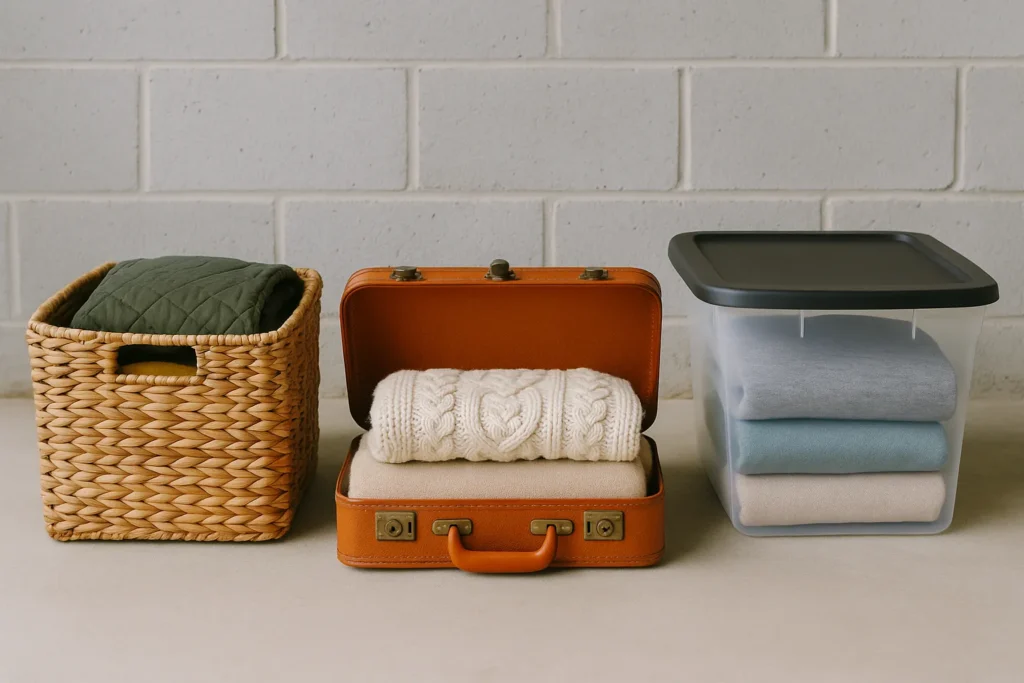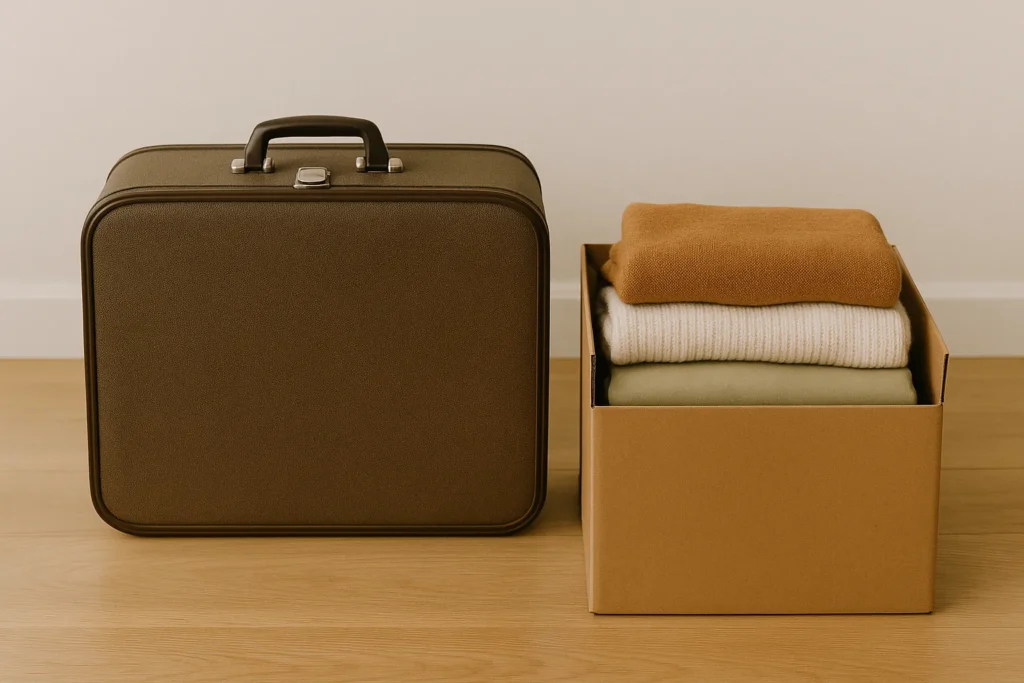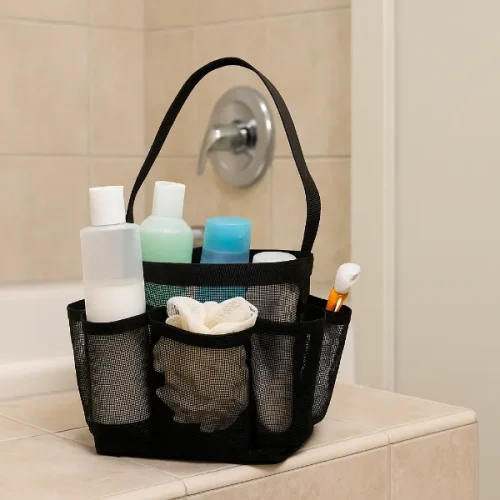
As the seasons change, so do our wardrobes. Sweaters and scarves give way to sundresses and shorts, while heavy coats are traded for light jackets and tees. For many people, the challenge isn’t owning clothes it’s managing them efficiently throughout the year. Without a system, seasonal clothing piles up in closets, leaving little room for the items you actually wear. Organizing seasonal clothing in storage bins can transform your closet from chaotic to calm, saving time and preserving your wardrobe’s quality.
This comprehensive guide walks through everything you need to know about storing clothing between seasons what to keep, what to donate, how to pack, label, and maintain your bins for easy rotation.
Why Seasonal Clothing Organization Matters
Clothing clutter is more than just a visual nuisance it affects your daily routine and mental space. When your closet is overflowing, it’s harder to find what you need and easier to forget what you own. Rotating seasonal clothes allows you to:
- Maximize space: Keep only current-season items accessible.
- Protect clothing: Prevent damage from dust, humidity, or pests.
- Streamline dressing: Reduce decision fatigue by simplifying your wardrobe.
- Maintain freshness: Clothes stored properly look and feel newer for longer.
By organizing seasonal items in bins, you’re creating a manageable cycle that keeps your wardrobe relevant and your storage areas functional.
Step 1: Declutter Before You Store
Before you pack anything, it’s essential to sort through what you own. The less you have to store, the easier it will be to organize. Use these decluttering questions:
- Did I wear this during the last season?
If it sat untouched, it might be time to donate. - Does it still fit comfortably and flatter me?
Don’t store items “just in case” they fit again one day. - Is it damaged or worn out?
Torn seams, broken zippers, or faded fabrics aren’t worth storing unless you plan to repair them. - Is it still in style or part of my personal taste?
Let go of items that no longer suit your lifestyle.
Create three piles: keep, donate/sell, and discard. Once you’ve pared down, your storage process becomes much more efficient.
Step 2: Clean and Prepare Each Item
Storing unwashed clothes can lead to permanent odors, mold, or fabric damage. Always clean items before packing them away.
- Machine wash or dry clean: Follow the care label. Even invisible body oils can cause yellowing or attract moths.
- Ensure dryness: Never store damp items. Allow washed clothes to air dry completely before folding.
- Repair before storage: Sew loose buttons or fix small tears to prevent further damage.
- Pair items properly: Keep sets together gloves, bathing suits, or matching pieces.
If you’re storing special materials like wool or silk, use breathable garment bags or acid-free tissue paper to maintain fabric integrity. For more information on how textiles behave and how natural fibers like cotton and wool respond to humidity and light, check out.

Step 3: Choose the Right Storage Bins
The storage bin you choose determines how well your clothes survive their off-season rest. Avoid flimsy cardboard boxes that can absorb moisture or attract pests. Instead, look for:
- Plastic bins with tight-fitting lids: These are durable, stackable, and moisture-resistant. Clear bins help identify contents easily.
- Opaque bins for dark storage: Prevents light exposure that can fade colors.
- Under-bed bins: Ideal for apartments or small spaces.
- Vacuum-sealed bags: Great for bulky items like coats and bedding, though avoid long-term use for delicate fabrics as compression can alter their shape.
Pro Tip: Choose bins with clip-lock lids or gasket seals to keep out humidity and dust. Add silica gel packs inside each bin to control moisture.
Step 4: Categorize and Sort Clothing Strategically
Once you have your bins ready, sort your clothing logically. Group items by type, season, or use frequency. Here are effective sorting strategies:
- By Season:
- Spring/Summer bin: T-shirts, shorts, swimsuits, sandals.
- Fall/Winter bin: Sweaters, coats, scarves, boots.
- By Family Member: Keeps bins personal and organized.
- By Activity:
- Outdoor gear: Rain jackets, hiking wear, snow pants.
- Work attire: Office clothing stored separately from casual pieces.
You can also combine strategies depending on your household’s size and available space. The goal is to make retrieval effortless once the season shifts.
Step 5: Fold, Roll, and Pack with Care
How you fold clothes in bins matters just as much as what you store. Overstuffing causes wrinkles, while improper folding can stretch fabrics.
- Fold knits loosely: Prevent stretching by folding sweaters gently rather than hanging them.
- Use tissue paper between delicate items: Helps prevent snags or color transfer.
- Roll lightweight clothing: Rolling maximizes space and minimizes creases for items like T-shirts or leggings.
- Pack heavier items at the bottom: Keep bins balanced and avoid crushing lighter fabrics.
Don’t overpack bins—leave room for airflow. If storing for long periods, allow fabrics to “breathe” with a cotton liner or pillowcase covering.
Step 6: Label Everything Clearly
Labels turn chaos into order. Even with clear bins, a proper labeling system prevents rummaging and confusion later.
Use large, easy-to-read labels on two sides of each bin, listing the contents and season. For example:
- Winter – Sweaters, Scarves, Gloves (Women’s)
- Summer – Beachwear & Sandals (Kids’)
- Fall – Jackets & Workwear (Men’s)
You can also use color-coded labels or stickers:
- Blue = Winter
- Green = Spring
- Yellow = Summer
- Orange = Fall
Consider keeping a storage inventory sheet either printed or digital. Apps like Sortly or Airtable make it simple to track what’s inside each bin.
Step 7: Choose the Right Storage Environment

Where you store your bins affects how well your clothes are preserved. Avoid places prone to temperature extremes or humidity fluctuations.
Ideal Storage Locations:
- Bedroom closets (top shelves or under-bed)
- Interior storage rooms
- Finished basements or climate-controlled attics
Avoid:
- Garages, sheds, or outdoor units (too hot, cold, or damp)
- Direct sunlight exposure (causes fading)
- Areas near plumbing or vents (risk of leaks or moisture)
The U.S. Environmental Protection Agency (EPA) emphasizes that controlling indoor humidity not only helps preserve textiles but also prevents mold growth, which can damage clothing fibers and negatively impact indoor air quality. Using a dehumidifier or maintaining humidity levels between 30–50% can make a big difference in how well your stored clothes last.
If space is limited, vertical shelving units or closet organizers can make use of vertical space while keeping bins accessible.
Step 8: Protect Against Pests and Odors
Even with sealed bins, natural deterrents help safeguard your wardrobe.
Natural moth and odor repellents:
- Cedar blocks or chips: Naturally repel moths and add a pleasant scent.
- Lavender sachets: Keep clothes fresh and pest-free.
- Baking soda pouches: Absorb excess moisture and neutralize odors.
- Dryer sheets: Add a light, clean scent to bins for short-term storage.
Avoid using mothballs they release toxic fumes and leave a strong smell. Instead, opt for eco-friendly alternatives that won’t damage fabrics.
Step 9: Create a Rotation System
Once your bins are packed and stored, set a system for rotating clothing each season. This keeps your closet functional year-round.
Here’s an easy approach:
- Mark bins by season: Store off-season bins at the back or bottom.
- Rotate twice a year: Swap bins around in spring and fall.
- Check for wear or damage: Inspect clothes each rotation to ensure they’re still in good condition.
- Donate or replace: Use each rotation as a chance to update your wardrobe.
If you live in a region with mild seasons, consider maintaining a “core” wardrobe accessible year-round and rotating only extreme-weather items.
Step 10: Maintain Storage Over Time
Seasonal organization isn’t a one-time job it’s an ongoing cycle. Maintaining your bins ensures the system keeps working.
Every few months:
- Inspect bins for moisture or odor buildup.
- Replace cedar blocks or lavender sachets.
- Update labels as your wardrobe changes.
- Check stored shoes or accessories for shape retention (stuff boots with paper or boot shapers).
By maintaining a seasonal rhythm, you’ll always know where things are and your clothing will stay fresher for years.
Extra Tips for Small Spaces
Even in apartments or small homes, organizing seasonal clothing in bins is possible with a little creativity:
- Use vertical space: Stack bins on top of wardrobes or inside tall shelving units.
- Under-furniture storage: Slide low-profile bins beneath beds or sofas.
- Convertible furniture: Storage ottomans or benches provide hidden storage for off-season wear.
- Closet dividers: Separate “in-season” and “off-season” clothes within a single closet using labeled garment bags or hanging organizers.
If space is very tight, consider rotating clothing monthly instead of seasonally especially in regions where weather fluctuates frequently.
Sustainable Storage Practices
Storage isn’t just about convenience it’s also an opportunity to be environmentally mindful. Here’s how to make your wardrobe rotation sustainable:
- Repurpose containers: Use old suitcases or baskets instead of buying new bins.
- Donate responsibly: Partner with local charities or textile recycling centers.
- Avoid plastic where possible: Choose fabric or cardboard boxes made from recycled materials.
- Air-dry instead of dry-clean: Reduces chemical exposure and saves energy.
Even labeling can be eco-friendly—use chalkboard labels or washable fabric tags to eliminate waste.
Seasonal Clothing Checklist
Here’s a quick reference to help you remember what belongs in each bin:
| Season | Key Items to Store | Care Tip Before Storing |
|---|---|---|
| Winter | Sweaters, coats, scarves, gloves, boots | Clean and use cedar to prevent moths |
| Spring | Light jackets, long-sleeve shirts, rain gear | Ensure items are dry and folded neatly |
| Summer | Shorts, swimsuits, sandals, tank tops | Remove sunscreen residue before storage |
| Fall | Cardigans, jeans, boots, hats | Check for mud or leaves in footwear |
This chart helps ensure nothing gets overlooked when switching seasons.
Final Thoughts
Organizing seasonal clothing in storage bins might feel like a small task, but it’s one that pays off daily. When your closet holds only what you actually wear, mornings feel smoother, your home feels lighter, and your clothes last longer.
By decluttering, cleaning, packing thoughtfully, and labeling clearly, you’ll turn your seasonal transitions into a simple, satisfying routine. Whether you live in a studio apartment or a large home, a well-organized bin system transforms how you experience your wardrobe helping you stay ready for every season with clarity and style.
FAQs
Rotating clothes keeps your closet organized, prevents clutter, and makes it easier to access weather-appropriate items.
Plastic bins with airtight lids work best. They’re durable, moisture-resistant, and easy to stack.
Yes. Always clean garments first dirt, sweat, and body oils can cause odors, stains, or attract pests.
Ensure clothes are completely dry, and use silica gel packs or moisture absorbers in each bin.
It’s not ideal. Temperature and humidity fluctuations in those areas can damage fabrics. Store bins indoors instead.
Use cedar blocks or lavender sachets as natural repellents. Avoid mothballs, as they leave harmful fumes and odors.
Fold sweaters and knits loosely, roll lighter items like T-shirts, and avoid overstuffing bins to allow airflow.
Label bins by season and category like “Winter: Sweaters & Scarves” or “Summer: Beachwear.” Use large, clear tags.
Rotate twice a year typically in spring and fall or as weather changes. Inspect and refresh stored bins each rotation.
Yes, but wrap delicate fabrics like silk or wool in cotton pillowcases or acid-free tissue paper for protection.













